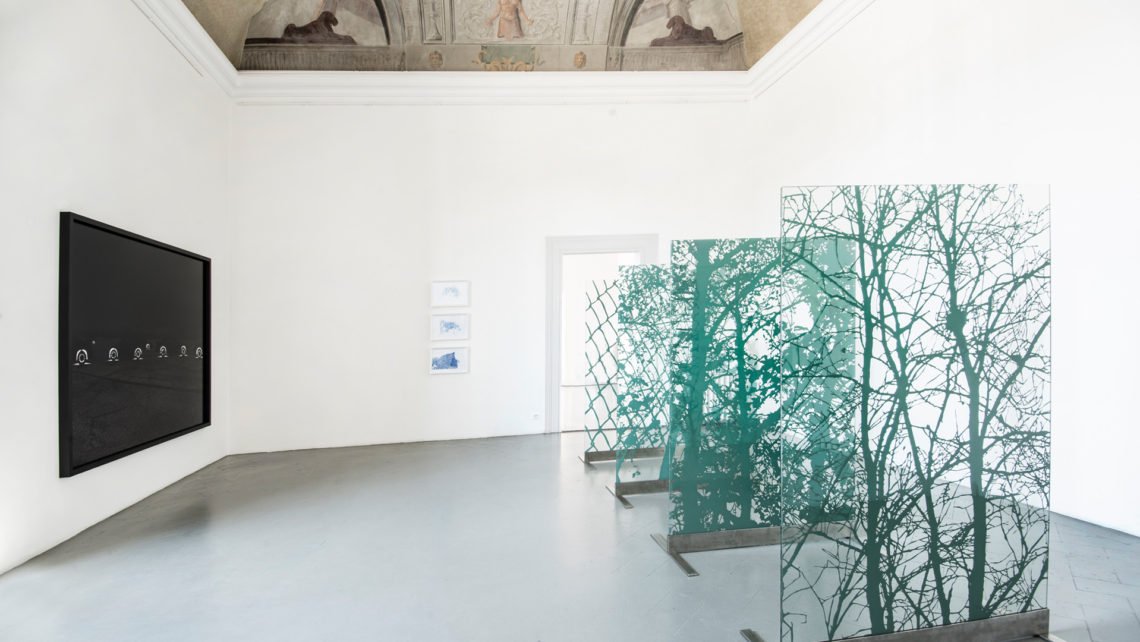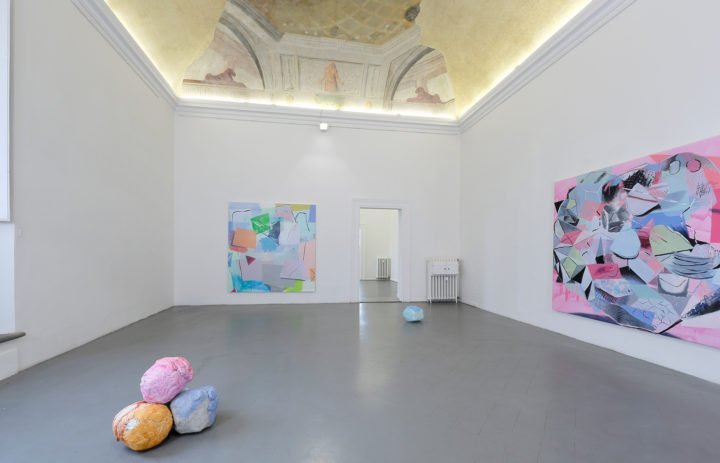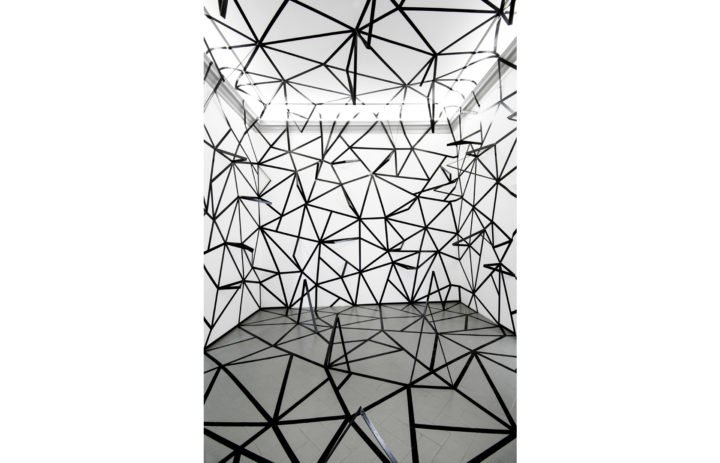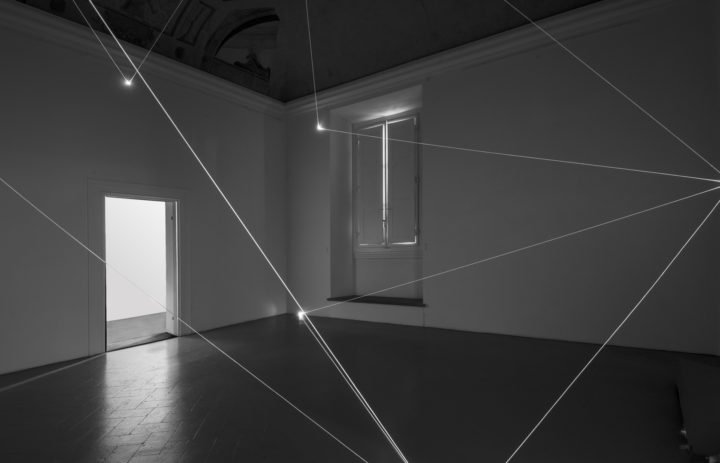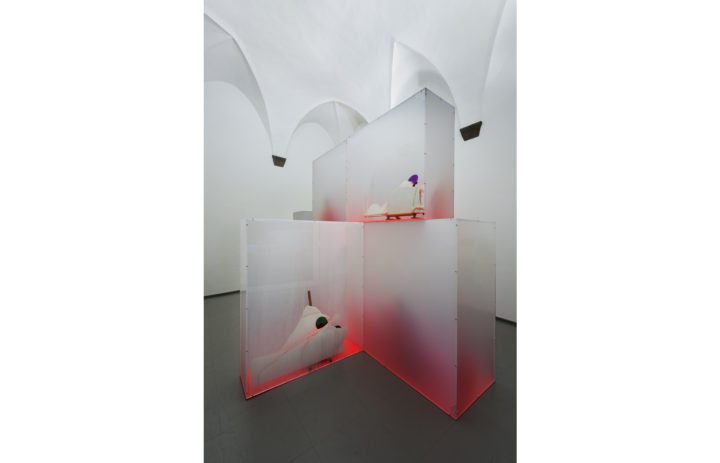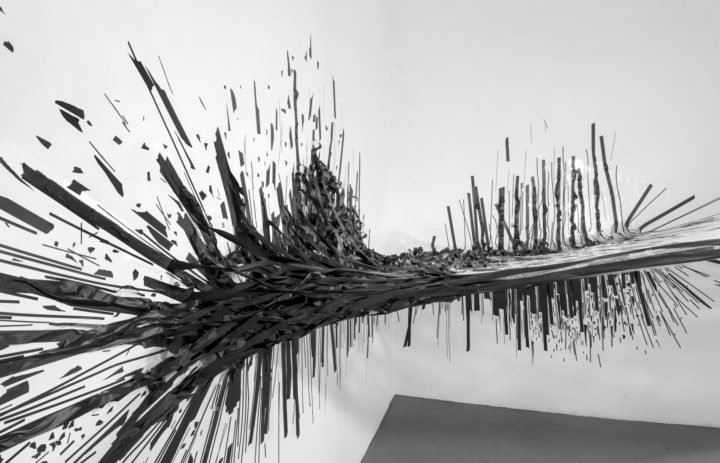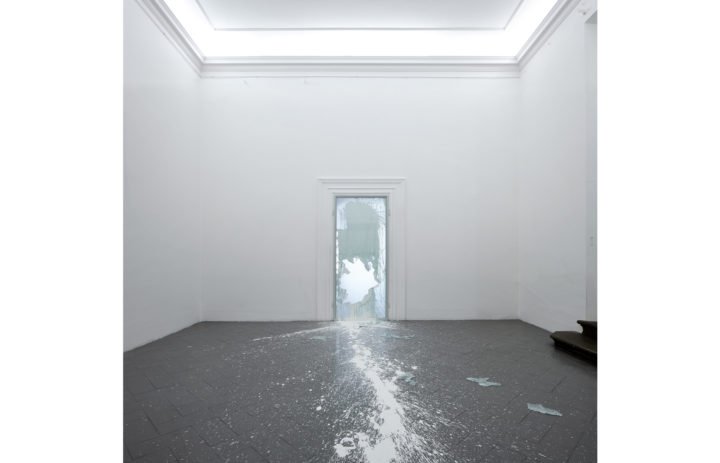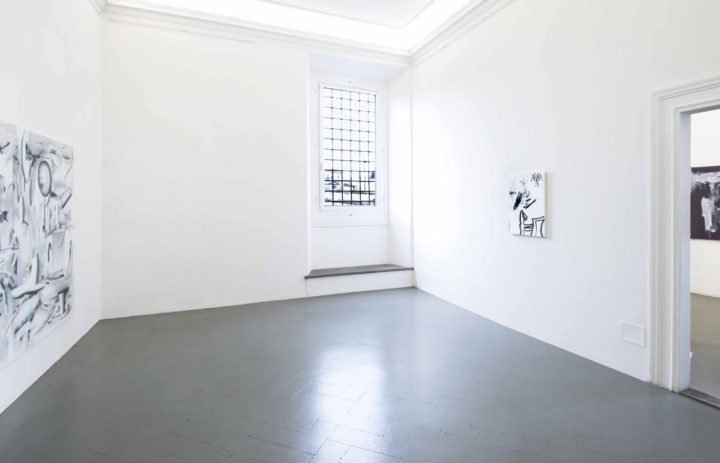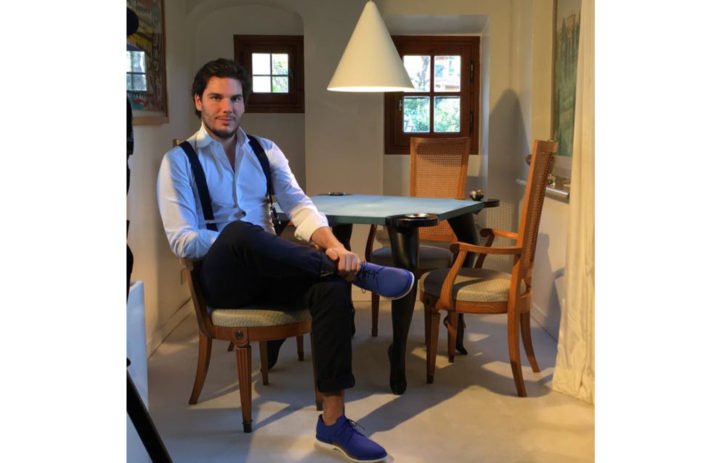- Address: Piazza Goldoni, 2, 50123 Firenze, Italia
- Owner: Eduardo Secci
Eduardo Secci (E): So we are located in the heart of Florence, one of the most important Renaissance cities in the world, and our building is of the 14th century. It was a noble house: Palazzo Ricasoli. We have the entire ground floor of this building. The space is divided into four major rooms. All of them are used to show artwork in our exhibitions. We have a back office space, one small office and a very small warehouse. The main thing about our spaces is that we try to keep them as traditional as possible. Meanwhile, we have left the fresco in the third room and the plasters around the doors and around the ceiling of every room. But at the same time, we have painted the entire gallery in white, and we have a grey floor. This is why we have installed many lights. These make the gallery very aseptic, and it helps our installations very much because we are able to give every exhibition the right identity, maintaining a very strong relationship with the structure of our gallery.
E: Eduardo Secci started from a dream that I had when I was very young: I wanted to work in contemporary art. My father was a collector, and he helped me to open the first space. I used to work in that older space that my father called San Gallo at that time, and after a couple of years of experience, I decided to go by myself. I opened a very small space near his office and, from there; I have grown larger and larger, trying to work more with younger and international artists. This is our aim.
E: First of all, I think that the biggest difference between our gallery and any other is the concept and aim of our gallery and of its manager. Going back to your question, I think that our/my aim is extremely different from the rest, and that is what makes our gallery so successful. Also, we try to work with international artists, and we are very interested in several contemporary issues. We also try our best to manage our clients and artists in the most professional way possible.
E: I would probably use “realistic,” which is why I think that we have a real gallery. We do the hard work, and we do both: pleasure and work, meaning that we try our best to represent and discover emerging and mid-career international artists. We are real, concrete, trendy and upcoming.
E: The location. I feel that our location is very good and extremely successful, but our collectors are all international. Therefore, I would like to get closer to them. It would be easier for us.
E: The idea of being a real gallery. We don’t just do trendy stuff. We really focus on discovering, on pulling up and on creating extremely complex ideas for the upcoming exhibitions.
E: I think that Florence is not a contemporary art city. There are few contemporary art galleries and almost none of them are internationally average. But Florence has the beauty of thousands of years of history in art. It is a strategic point in which we can really reach international collectors and international artists.
E: I can say that the majority of people think that the good galleries are only the ones that are able to apply and participate in international shows, but this is not true. There is an extremely straight competition to enter into these shows, and a lot of extremely successful galleries are unfortunately left behind because of the limited amount of space that fairs have available. Maybe another misunderstanding could be the concept of approaching collectors regarding artwork. Most of the time, they feel like contemporary art is unfinished, and sometimes they feel that what they are looking at is not valuable because it might be technically easy, and they could have done it. Many say, “I can do that too.” But actually, in contemporary art, the meaning of the work goes beyond the actual view of it, so in these case, many times, you have to leave your prejudice at the door and try to understand the real interest and the real meaning that the artist wanted to give to that simple piece of paper in order to understand what you’re actually looking at.
E: It’s so difficult to choose. I really love Lucio Fontana’s artwork “La fine di Dio.”
E: Bringing contemporary art to Florence and continuing to follow my dreams.
E: The exhibition we will be doing in September, a group show with Baptiste DeBombourg, Daniel Canogar, Levi van Veluw and Zimoun. But for the 2018, I can’t say. There is one contemporary art sculpture show that I’m really looking for, but I really can’t say yet!
E: Well, when we enquire about new artists, we study their art and their carrier very carefully to understand if, for us, they are the “right” artists to include from a strategic point of view. When we enquire about an artwork from another artist who we maybe don’t represent, first of all, I always look at the beauty of the piece and decide if I love the artwork that I am looking at.
E: I think that many galleries will close because the market is becoming more selective, and the main galleries are becoming huge brands. Contemporary art fairs are always more powerful, so you have to be part of an art fair in order to sell to the collectors. Auctions are becoming extremely powerful. We are not able to find artwork at a normal price. I definitely think that the majority of medium and small galleries will close. The big ones will also close, and I feel like contemporary art is always becoming more of a brand and less about quality.
E: My advice is to really try to understand themselves and to find their paths without thinking about becoming Picasso (or any other big artist).
E: I think quality is quality.
- Featured image on the top: Luca Pancrazzi, Andrea Galvani
- Photos courtesy of Eduardo Secci Contemporary

